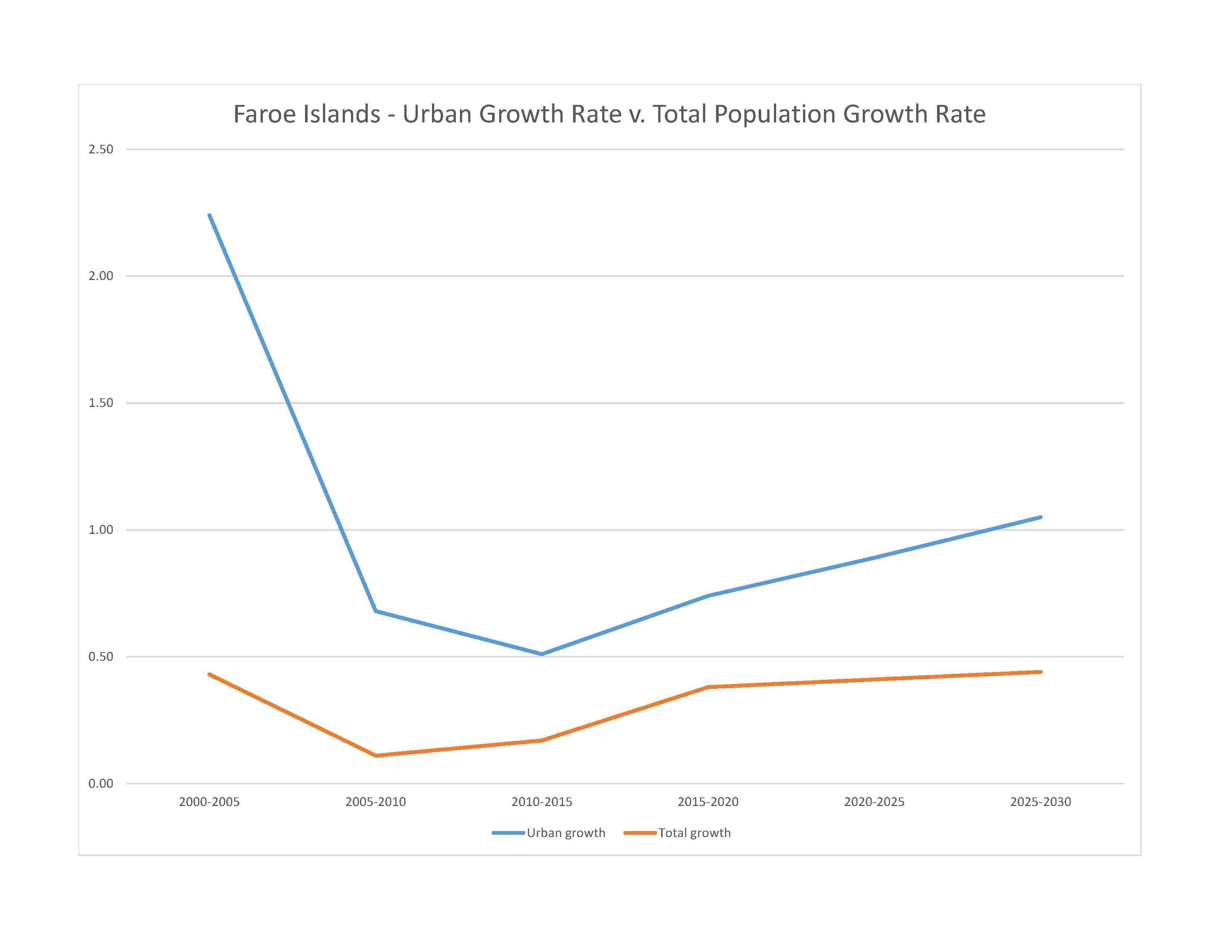
coastal erosion, landslides and rockfalls, flash flooding, wind storms; oil spills
mild winters, cool summers; usually overcast; foggy, windy
agricultural land: 2.1% (2018 est.)
arable land: 2.1% (2018 est.)
permanent crops: 0% (2018 est.)
permanent pasture: 0% (2018 est.)
forest: 0.1% (2018 est.)
other: 97.8% (2018 est.)
urban population: 43% of total population (2023)
rate of urbanization: 0.89% annual rate of change (2020-25 est.)

0% of GDP (2017 est.)
carbon dioxide emissions: 0.63 megatons (2016 est.)
municipal solid waste generated annually: 61,000 tons (2014 est.)
municipal solid waste recycled annually: 40,870 tons (2012 est.)
percent of municipal solid waste recycled: 67% (2012 est.)
0 cubic meters (2017 est.)
NOTE: The information regarding Faroe Islands on this page is re-published from the 2024 World Fact Book of the United States Central Intelligence Agency and other sources. No claims are made regarding the accuracy of Faroe Islands 2024 information contained here. All suggestions for corrections of any errors about Faroe Islands 2024 should be addressed to the CIA or the source cited on each page.
This page was last modified 04 May 24, Copyright © 2024 ITA all rights reserved.